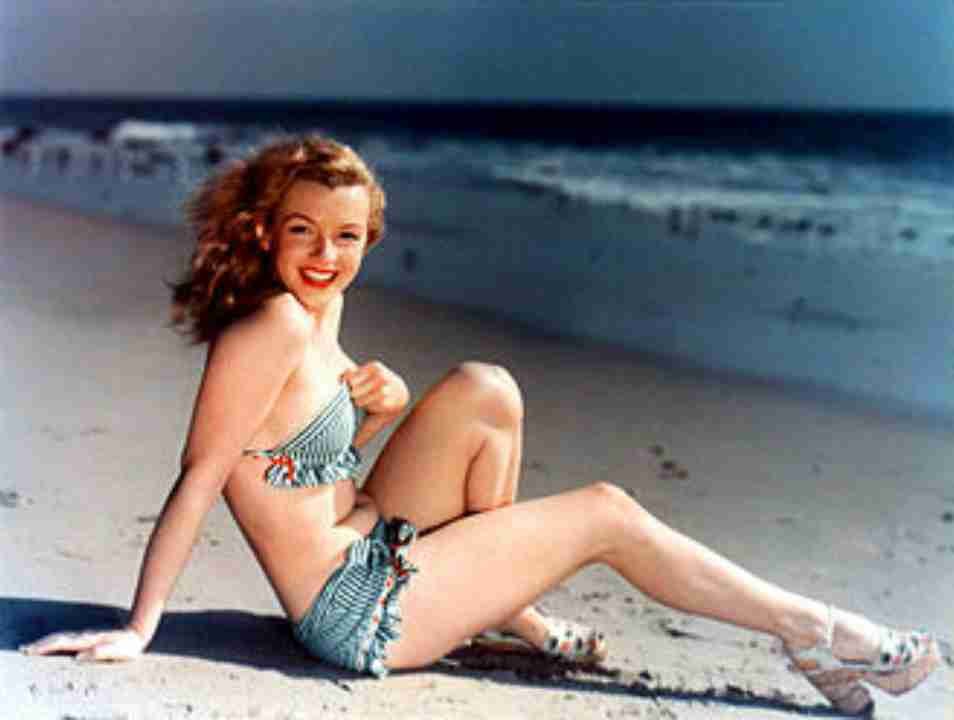Introduction:
In the dazzling realm of Hollywood’s golden era, few names sparkle as brightly as Marilyn Monroe. Born as Norma Jeane Mortenson on June 1, 1926, this iconic actress captivated the world with her beauty, talent, and enigmatic persona. Join us on a captivating journey through the life and times of Marilyn Monroe – the blonde bombshell who left an indelible mark on the silver screen and beyond.

Early Life and Education:
Marilyn’s journey began in Los Angeles, California, where she spent a tumultuous childhood in and out of foster homes. Raised by her mother, Gladys Baker, and facing the challenges of a broken family, Marilyn’s early years were far from glamorous. Yet, these struggles only fueled her determination to escape the shadows of her past.
Her education, often interrupted by personal challenges, couldn’t stifle her insatiable thirst for knowledge. Despite not completing high school, Marilyn’s intelligence and innate curiosity became defining aspects of her personality, setting her apart in a world that often underestimated her.
Family Background and Early Career:
Marilyn’s family history is a tapestry of trials and tribulations. Her tumultuous relationships and complex family dynamics added layers to her magnetic personality. The quest for stability led her to an early marriage at the age of 16, setting the stage for a life of constant transformation.
As fate would have it, a chance encounter with a photographer changed everything. It wasn’t long before her ethereal beauty graced magazine covers and caught the eye of Hollywood. Marilyn’s career trajectory had begun, and it was destined to be meteoric.
Filmography and Stardom:
Marilyn’s cinematic journey is an illustrious one, marked by iconic performances that continue to captivate audiences today. From her breakthrough role in “Gentlemen Prefer Blondes” to the unforgettable “Some Like It Hot,” each film showcased her unparalleled charisma and comedic timing.
Her on-screen chemistry with leading men like Clark Gable and Cary Grant solidified her status as one of Hollywood’s most sought-after actresses. Behind the scenes, Marilyn’s dedication and work ethic set her apart, earning her the respect of peers and industry insiders.
Achievements and Awards:
Marilyn Monroe’s impact on the film industry is undeniable, earning her several accolades and nominations. Her performance in “Bus Stop” and “The Prince and the Showgirl” garnered critical acclaim, showcasing her versatility as an actress.
In 1960, she received a Golden Globe for Best Actress in a Musical or Comedy for her role in “Some Like It Hot.” Marilyn’s ability to seamlessly transition between comedic and dramatic roles was a testament to her talent and versatility.
Conflicts and Personal Struggles:
Behind the glamour and glitz, Marilyn grappled with personal demons. The pressures of fame, coupled with her tumultuous personal life, took a toll on her mental health. Conflicts with studio executives and the relentless scrutiny of the media added to her struggles, painting a poignant picture of the price of stardom.
Family and Love Life:
Marilyn’s love life was as dramatic as the films she starred in. From her early marriages to her relationships with renowned figures like Joe DiMaggio and Arthur Miller, each chapter added a layer to the complex narrative of her personal life. Despite the challenges, Marilyn’s romantic entanglements showcased her vulnerability and desire for genuine connection.
Interesting Facts and Bio Stats:
Beyond the headlines and tabloid tales, Marilyn Monroe was a woman of fascinating contrasts. Did you know that she had a keen interest in literature and amassed an impressive personal library? Or that she was an early advocate for civil rights, breaking barriers in an era marked by inequality?
As for her iconic appearance, Marilyn’s signature blonde hair wasn’t always a constant. She was a natural brunette who embraced the blonde bombshell persona, forever etching it into the annals of Hollywood history.
Car Collection and Net Worth:
Marilyn Monroe’s love for luxury extended beyond the silver screen. Her car collection, which included a sleek red Thunderbird, reflected her affinity for the finer things in life. While her net worth fluctuated throughout her career, Marilyn’s legacy endures, with her estate generating revenue long after her untimely passing.
Legacy and Enduring Influence:
Marilyn Monroe’s untimely death in 1962 at the age of 36 shocked the world. Yet, her legacy persists, transcending time and continuing to inspire generations. From her enduring impact on fashion to her timeless allure, Marilyn’s influence is woven into the fabric of popular culture.
Conclusion:
Marilyn Monroe’s life journey was a kaleidoscope of triumphs and tribulations, love and loss. Beyond the glamour, she remains an enigmatic figure whose story resonates with audiences worldwide. As we delve into the pages of her biography, we discover a woman who, despite facing myriad challenges, left an indelible mark on the world, ensuring that the name Marilyn Monroe will forever be synonymous with Hollywood’s golden age.

Register for My Upcoming Masterclass HERE
See You in the Live Masterclass
Sunil Chaudhary stands as a preeminent global Leading digital coach, boasting a diverse clientele hailing from over 50 nations. Renowned for his prowess as an exemplary SEO expert, business automation coach, and landing page authority, Chaudhary also holds the distinction of being esteemed as the finest business coach in India. Beyond technical domains, he imparts invaluable insights into mindset, success, and life skills, thus encompassing a holistic approach to mentorship.



















